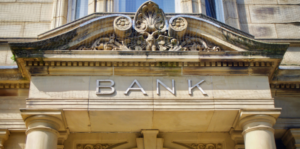Now that President Joe Biden has taken office, experts and politicians have ramped up conversations about student loan forgiveness in 2021.
As of right now, there’s nothing set in stone. But plans from Joe Biden on student loan debt have been discussed, including one to forgive $10,000 in federal student loans for all eligible borrowers.
Here’s what you need to know about Biden’s student loan cancellation plans, including who would qualify and what to do if you don’t.
What is Biden’s plan for $10,000 in student loan forgiveness?
Like many other Democrats, there have been several plans discussed by Joe Biden on student loans and the cost of college.
One of those plans is to provide $10,000 in student loan forgiveness in 2021 as part of Biden’s Emergency Action Plan. The forgiveness provision is just one of the many proposals the president has made to jumpstart the economy in response to the coronavirus pandemic.
Unfortunately, not all student loan borrowers will be able to take advantage of forgiveness, something that many noticed when the Coronavirus Assistance, Relief, and Economic Security (CARES) Act’s student loan pause didn’t help all borrowers.
Still, the $10,000 forgiveness proposal would completely wipe out the remaining balances for millions of student loan borrowers and reduce the balance significantly for many others.
On Biden’s website, the description for the Emergency Action Plan describes working with Congress to create a coronavirus relief bill. Experts and politicians have suggested that Biden could also forgive student loans with an executive order instead.
Who would qualify for the plan from Joe Biden on student loans?
In an ideal world, every college graduate with debt would qualify for student loan forgiveness in 2021. But the federal government can only act on debt that it owns, which means that you need to have federal student loans – serviced by the U.S. Department of Education – to qualify.
That means any private student loan debt – issued from a bank or other financial institution – would not qualify for Biden’s proposed $10,000 in forgiveness.
Based on the student loan payment freeze provision in the CARES Act, it’s also likely that borrowers with federal loans owned by a private company won’t be eligible.
When could this student loan forgiveness plan take effect?
It’s hard to say yet exactly when eligible borrowers will receive $10,000 in federal student loan forgiveness, and it’s still not a guarantee.
Biden could potentially put his cancellation plan into effect with a simple stroke of the pen on an executive order. But if Congress is willing to explore options, it may take longer as the relief bill goes through both branches of Congress and their committees.
As such, it’s important for borrowers to avoid banking on student loan forgiveness in 2021, or at all. Until we have more details about the implementation, it’s a good idea to continue to expect to pay off your student loan debt as you have been since you graduated — or your child graduated if you have Parent PLUS Loans.
How refinancing can help with your remaining student loan debt balance
If you don’t qualify for the $10,000 plan from the Biden administration, or you expect to still have a large student loan balance after it’s taken effect, refinancing your student loans could be a good way to address your remaining debt.
Student loan refinancing is the process of replacing one or more existing student loans with a new one from a private lender. You can refinance both federal and private student loans.
Pros of student loan refinancing
There are a lot of benefits that can come from student loan refinancing, as long as you’re eligible. That includes:
- Lower interest rates: With record-low refinancing rates, now can be an excellent time to get a loan with a lower rate than what you’re currently paying. Along with savings on interest charges, this could also reduce your monthly payment, making it more affordable.
- Repayment plan flexibility: Student loan refinance companies typically offer repayment terms ranging from five to 25 years, giving you some flexibility with how you plan to pay off your debt. If you have room in your budget, for instance, you could choose a shorter repayment term with a larger payment to eliminate your debt early. Alternatively, if you can’t afford your payments, you could opt for a longer term, which will make them more affordable but also result in more total interest charges over time.
- Choice of lender: If you have federal student loans, you didn’t get a chance to choose your servicer unless you consolidated your loans with a servicer other than the one the Department of Education assigned to you. With refinancing, you’ll be able to choose between a number of lenders based on the factors that are most important to you.
Cons of student loan refinancing
While there are some clear perks to refinancing your student debt, there are also some potential pitfalls that may not make it worth it:
- You’re not guaranteed to qualify: According to data on student loans gathered by Purefy, the average FICO score and annual income for people who refinance student loans are 774 and $98,156, respectively. That doesn’t mean you won’t qualify if you don’t meet those thresholds, but it may mean you’ll have a harder time getting the terms you want.
- You may lose access to certain perks: If you have federal student loans, you qualify for student loan forgiveness programs and income-driven repayment plans. If you refinance your loans with a private lender, though, you’ll no longer have access to those. Also, private lenders typically don’t have the same level of generosity with deferment and forbearance. Make sure you don’t plan on needing these benefits before you refinance.
The bottom line
Joe Biden’s $10,000 student loan forgiveness proposal could make a significant impact on tens of millions of student loan borrowers, but it may not solve the full problem for many. Whether or not you qualify for the plan, consider refinancing at least the portion of your student loans that wouldn’t be cancelled.
The Purefy Compare Rates tool can help you shop around and view loan offers from multiple lenders side by side. This will make it easier to find the best rates and terms based on your credit and financial situation.
















